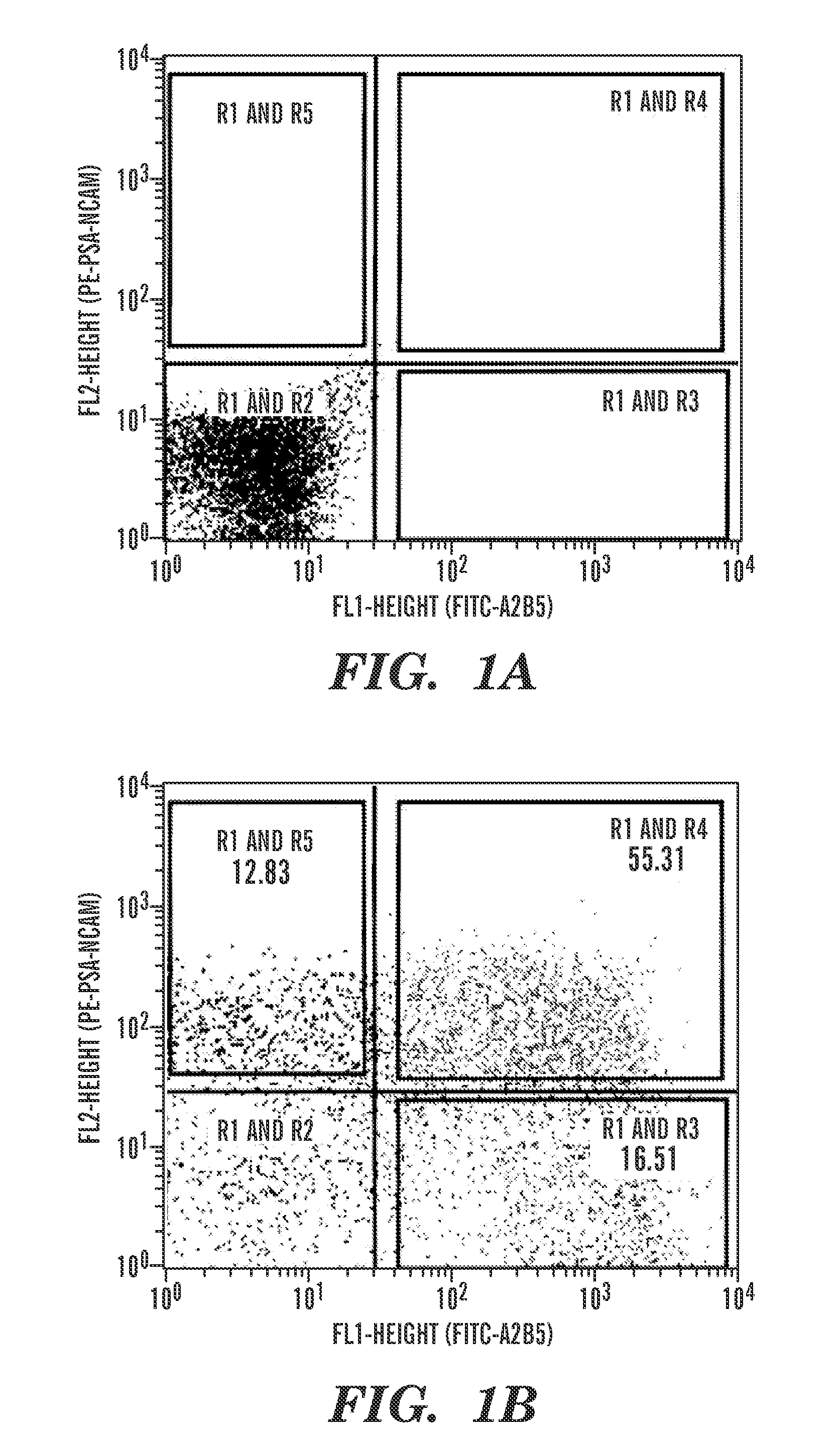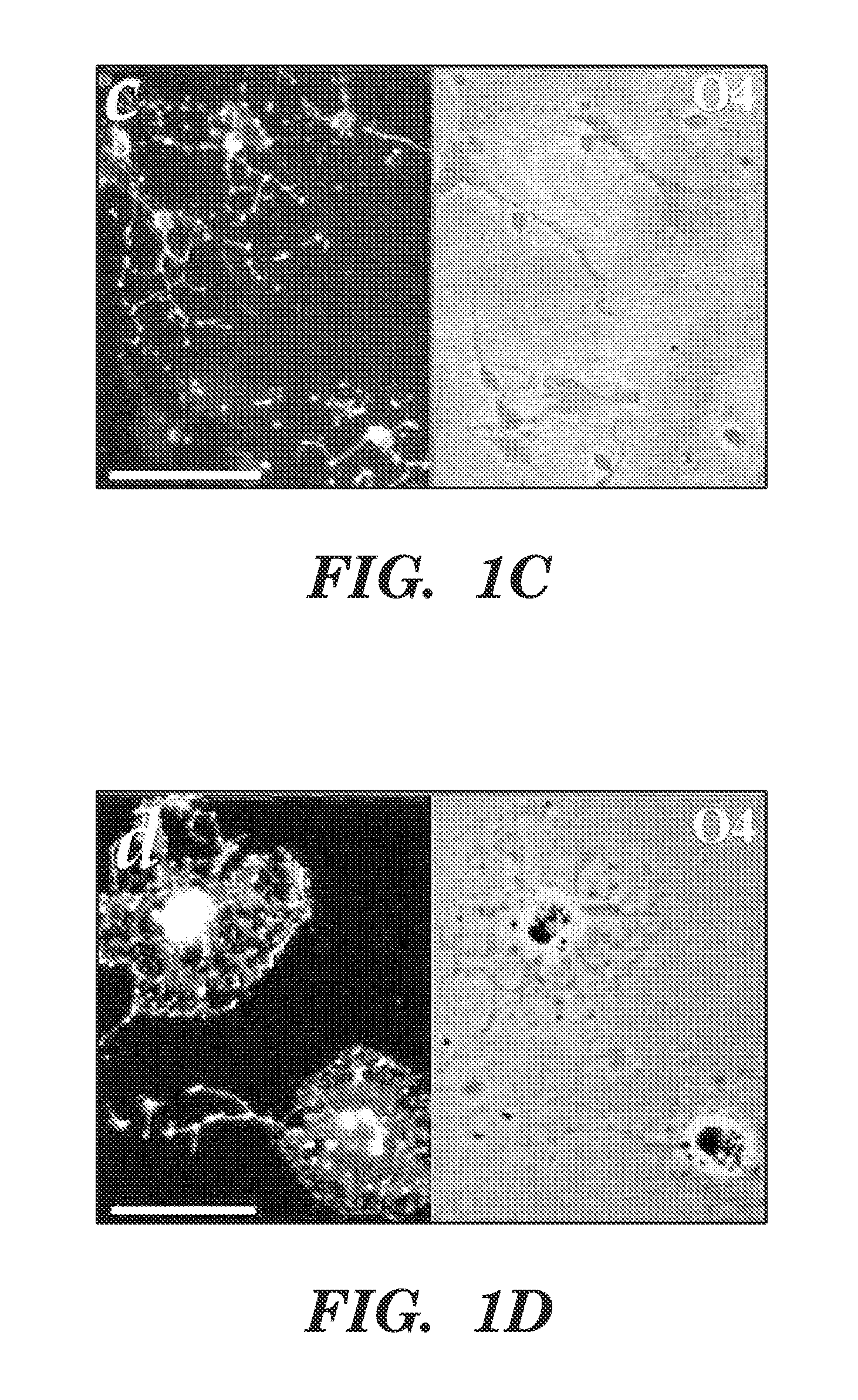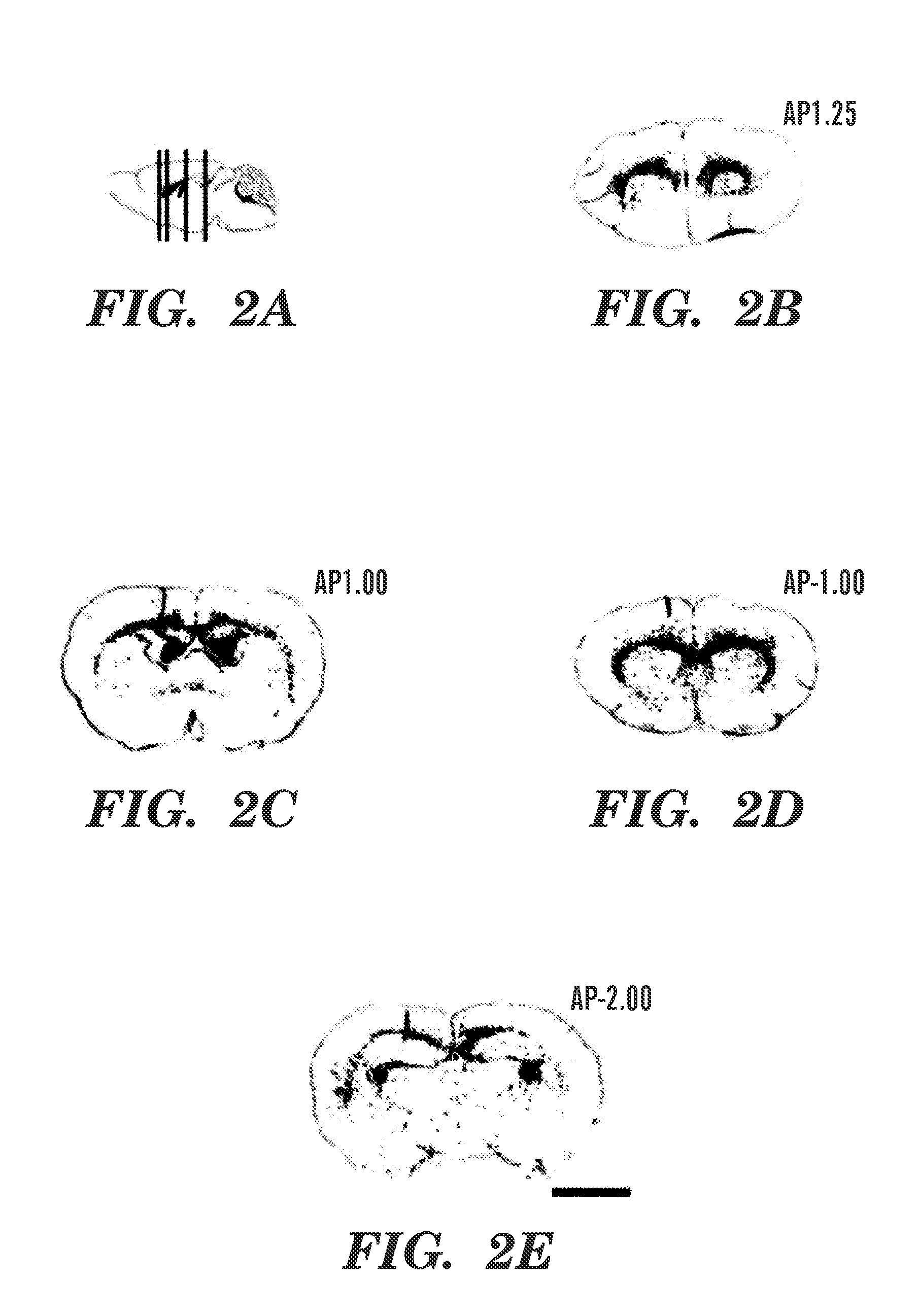Myelination of congenitally dysmyelinated forebrains using oligodendrocyte progenitor cells
a technology of oligodendrocyte progenitor cells and myelination, which is applied in the field of myelination of congenitally dysmyelinated forebrains, can solve the problems of patchy remyelination, low efficiency, and inability to properly develop or repair myelin, and achieves neither undesired phenotypes nor parenchymal aggregates, and widespread and high-efficiency my
- Summary
- Abstract
- Description
- Claims
- Application Information
AI Technical Summary
Problems solved by technology
Method used
Image
Examples
example 1
Cells
[0052]Cells Tissue from late gestational age human fetuses (21 to 23 weeks) were obtained at abortion. The forebrain ventricular / subventricular zones were rapidly dissected free of the remaining brain parenchyma, and the samples chilled on ice. The minced samples were then dissociated using papain / DNAse as previously described (Keyoung et al., “Specific Identification, Selection and Extraction of Neural Stem Cells from the Fetal Human Brain,”Nature Biotechnology 19:843-850 (2001), which is hereby incorporated by reference in its entirety), always within 3 hours of extraction. The dissociates were then maintained overnight in minimal culture media of DMEM / F12 / N1 with 20 ng / ml FGF.
example 2
Sorting
[0053]The day after dissociation, the cells were incubated 1:1 with MAb A2B5 supernatant (clone 105; ATCC, Manassas, Va.), for 30 minutes, then washed and labeled with microbead-tagged rat anti-mouse IgM (Miltenyi Biotech). All incubations were done at 4° C. on a rocker. In some instances, 2-channel fluorescence-activated cell sorting was done to define the proportions and phenotypic homogeneity of A2B5 and PSA-NCAM-defined subpopulations, using a FACSVantage SE / Turbo, according to previously described methods (Keyoung et al., “Specific Identification, Selection and Extraction of Neural Stem Cells from the Fetal Human Brain,”Nature Biotechnology 19:843-850 (2001) and Roy et al., “In Vitro Neurogenesis by Progenitor Cells Isolated from the Adult Human Hippocampus,”Nat Med 6:271-277 (2000), which are hereby incorporated by reference in their entirety). More typically, and for all preparative sorts for transplant purposes, magnetic separation of A2B5+ cells (MACS; Miltenyi) was ...
example 3
Transplantation and Tagging
[0054]Homozygous shiverers were bred in a colony. Within a day of birth, the pups were cryoanesthetized for cell delivery. The donor cells were then implanted using a pulled glass pipette inserted through the skull, into either the corpus callosum, the internal capsule, or the lateral ventricle. The pups were then returned to their mother, and later killed after 4, 8, 12, or 16 weeks. For some experiments, recipient mice were injected for 2 days before sacrifice with BrdU (100 μg / g, as a 1.5 mg / 100 μl solution), q12 hrs for 2 consecutive days.
PUM
| Property | Measurement | Unit |
|---|---|---|
| width | aaaaa | aaaaa |
| length | aaaaa | aaaaa |
| volume | aaaaa | aaaaa |
Abstract
Description
Claims
Application Information
 Login to View More
Login to View More - R&D
- Intellectual Property
- Life Sciences
- Materials
- Tech Scout
- Unparalleled Data Quality
- Higher Quality Content
- 60% Fewer Hallucinations
Browse by: Latest US Patents, China's latest patents, Technical Efficacy Thesaurus, Application Domain, Technology Topic, Popular Technical Reports.
© 2025 PatSnap. All rights reserved.Legal|Privacy policy|Modern Slavery Act Transparency Statement|Sitemap|About US| Contact US: help@patsnap.com



